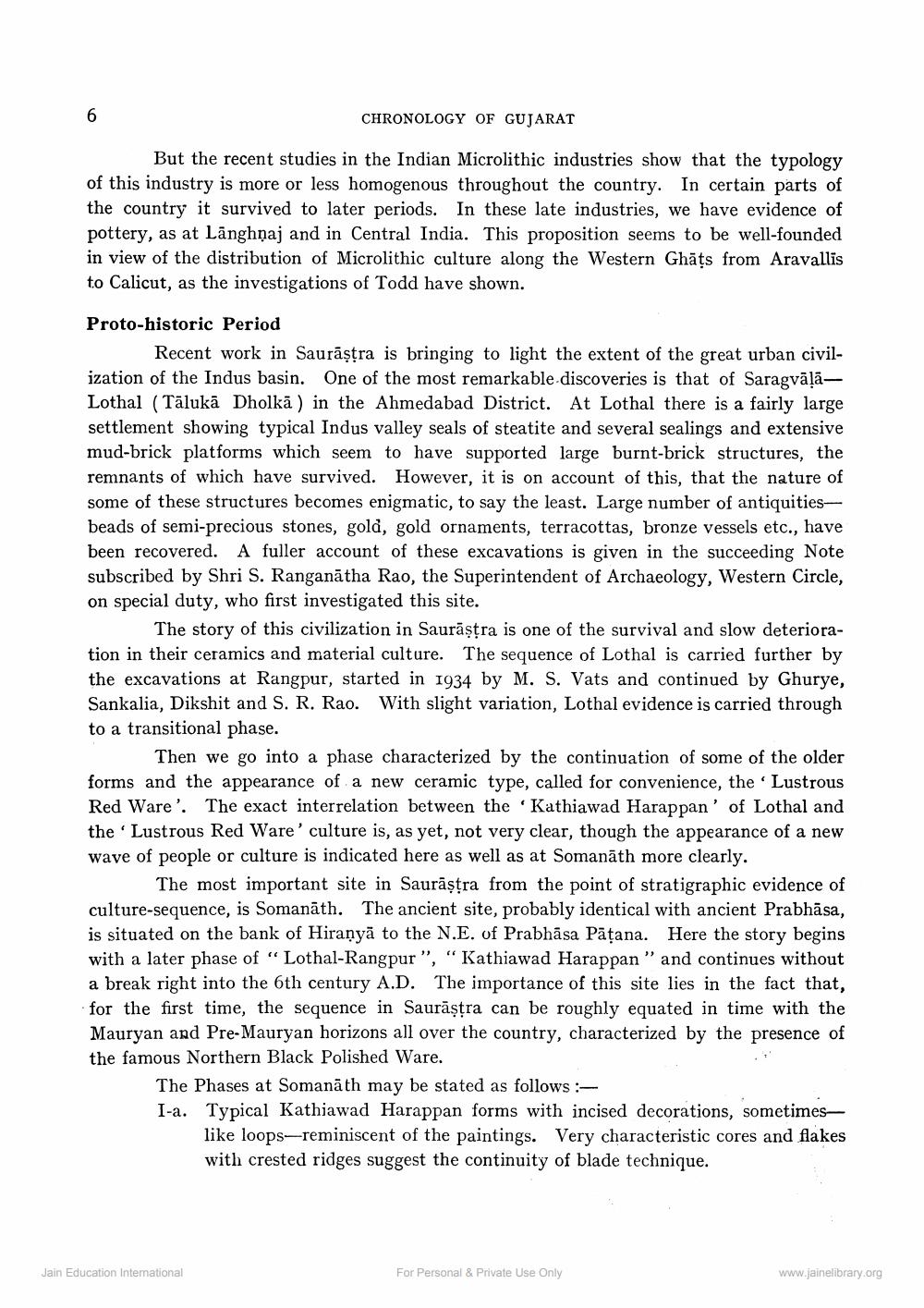________________
CHRONOLOGY OF GUJARAT
But the recent studies in the Indian Microlithic industries show that the typology of this industry is more or less homogenous throughout the country. In certain parts of the country it survived to later periods. In these late industries, we have evidence of pottery, as at Lānghộaj and in Central India. This proposition seems to be well-founded in view of the distribution of Microlithic culture along the Western Ghāts from Aravallis to Calicut, as the investigations of Todd have shown.
Proto-historic Period
Recent work in Saurastra is bringing to light the extent of the great urban civilization of the Indus basin. One of the most remarkable discoveries is that of SaragvāļāLothal (Tālukā Dholkā) in the Ahmedabad District. At Lothal there is a fairly large settlement showing typical Indus valley seals of steatite and several sealings and extensive mud-brick platforms which seem to have supported large burnt-brick structures, the remnants of which have survived. However, it is on account of this, that the nature of some of these structures becomes enigmatic, to say the least. Large number of antiquitiesbeads of semi-precious stones, gold, gold ornaments, terracottas, bronze vessels etc., have been recovered. A fuller account of these excavations is given in the succeeding Note subscribed by Shri S. Ranganātha Rao, the Superintendent of Archaeology, Western Circle, on special duty, who first investigated this site.
The story of this civilization in Saurāșțra is one of the survival and slow deterioration in their ceramics and material culture. The sequence of Lothal is carried further by the excavations at Rangpur, started in 1934 by M. S. Vats and continued by Ghurye, Sankalia, Dikshit and S. R. Rao. With slight variation, Lothal evidence is carried through to a transitional phase.
Then we go into a phase characterized by the continuation of some of the older forms and the appearance of a new ceramic type, called for convenience, the 'Lustrous Red Ware'. The exact interrelation between the Kathiawad Harappan' of Lothal and the 'Lustrous Red Ware' culture is, as yet, not very clear, though the appearance of a new wave of people or culture is indicated here as well as at Somanāth more clearly.
The most important site in Saurāṣtra from the point of stratigraphic evidence of culture-sequence, is Somanāth. The ancient site, probably identical with ancient Prabhāsa, is situated on the bank of Hiraṇyā to the N.E. of Prabhāsa Pāțana. Here the story begins with a later phase of " Lothal-Rangpur”, “Kathiawad Harappan " and continues without a break right into the 6th century A.D. The importance of this site lies in the fact that, for the first time, the sequence in Saurāṣtra can be roughly equated in time with the Mauryan and Pre-Mauryan horizons all over the country, characterized by the presence of the famous Northern Black Polished Ware.
The Phases at Somanāth may be stated as follows:I-a. Typical Kathiawad Harappan forms with incised decorations, sometimes
like loops-reminiscent of the paintings. Very characteristic cores and flakes with crested ridges suggest the continuity of blade technique.
Jain Education Intemational
For Personal & Private Use Only
www.jainelibrary.org




